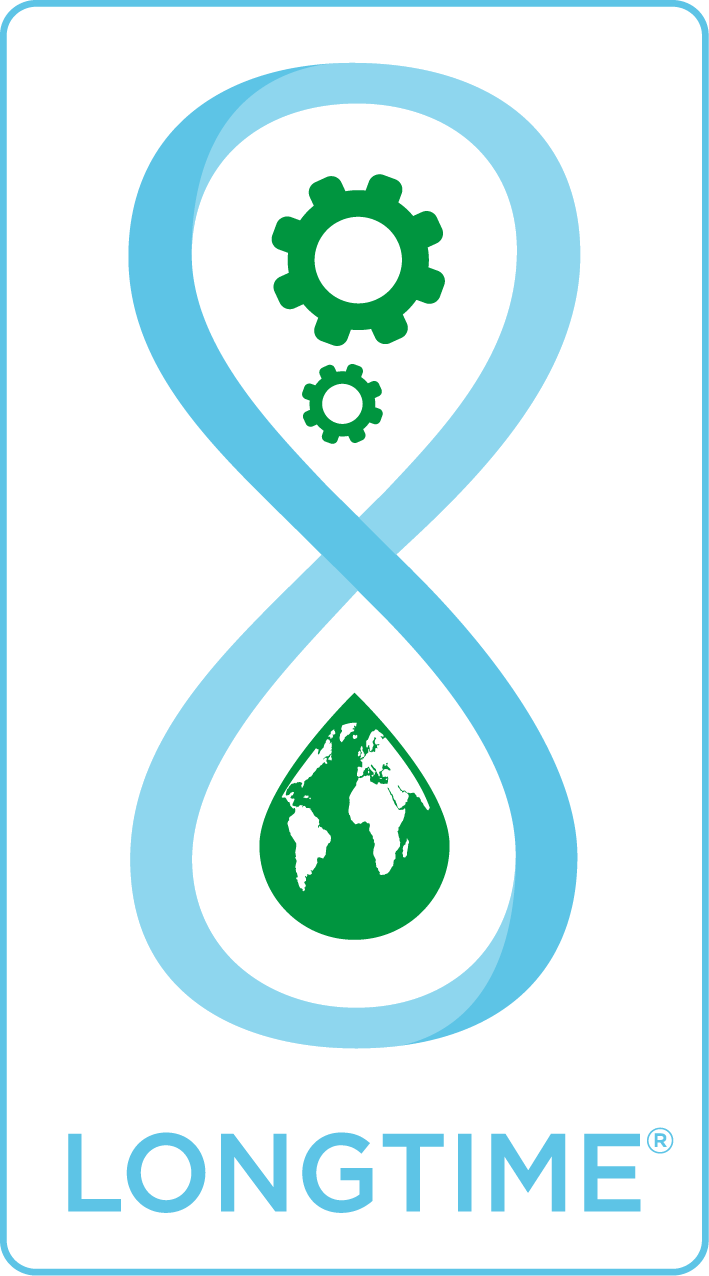sustainable branding – Making a difference
Highlighting brands that are committed to sustainability is also the mission of the LONGTIME® Label. Read on and find out all about a sustainable brand!
What is a sustainable brand?
“A sustainable brand is a brand whose mission and raison d’être brings sustainable environmental, human or social benefits to all its stakeholders: consumers, employees, suppliers and partners throughout its value chain and product life cycle;
A sustainable brand integrates sustainable development at the heart of its activities and objectives, helping society to evolve and arousing consumer interest in their products or services.
In 2021, consumers want to know what they are buying and are choosing transparent and ethical brands. It is up to industry to take this into account by taking concrete action to protect the environment. Climate change and social crises have turned our vision of the world and its limits on its head.
People have become aware of the impact of their consumption: 74% of Europeans say they have changed their consumption habits and 60% of French people think it is urgent to do something for the planet. So what action should be taken?
Consumers are changing their everyday behaviour, practising de-consumption or consom’action. They buy second-hand products, use applications to help them consume better, and make a point of choosing quality and eco-responsible products. They choose to join forces to boycott a company and its practices… They do their own research and make a commitment to the environment by finding alternatives in the manufacture of ‘homemade’ cleaning and beauty products.
For 62% of them, it is up to companies to rally to the side of consumers to help them reduce the impact of their consumption. Companies could therefore regain the confidence of buyers if they took the right measures.
A sustainable, ethical or fair trade brand is therefore committed to sustainable development. It adopts virtuous, eco-friendly and socially responsible production practices. It proposes concrete environmental solutions or effective social solutions. Brands are sustainable when they choose to commit to a more resilient planet, to a more stable future, far from destructive climate change.
How can you recognise a sustainable brand?
It’s not always easy to recognise truly sustainable brands. Between 2004 and 2019, trust in brands fell by 30%, from 58% to 27%. This significant level of mistrust is partly explained by unacceptable health, social and environmental scandals.
When brands that claim to be “sustainable” are driven solely by marketing considerations that are devoid of meaning and, above all, action, they are practising “greenwashing”. These companies adopt a deceptively virtuous approach to social and environmental issues, with the sole aim of making themselves more attractive to consumers.
To recognise a sustainable brand, you need to use common sense, ask yourself a few questions and have a few reflexes:

Environmental or social claims :
A sustainable brand will naturally tend to highlight the efforts it is making to reduce its impact.
It is therefore important to pay attention to the different types of claims made by these brands.
For example, the words “recycled”, “ethical” and “ecological” should set off alarm bells. The sustainable brand implements a strategy to be identified as such. But at this stage, it’s not enough to prove that the brand is truly sustainable.
Labels or other official endorsements :
Environmental claims must be validated to confirm that they have been made. If a brand advertises fair trade, for example, it will normally display a label such as “Fairtrade”, together with the inspection body that issued it. And the same applies to many claims. Do not hesitate to check that the label displayed by the brand is not a pseudo-label that the brand has awarded itself.
Un label doit être impartial, avoir un cahier des charges exigeant et être attribué par un organisme de contrôle indépendant.
Value for money:
Each product or product category has a fair price, allowing the product to be developed to quality standards that protect people and the planet. If you have a brand in front of you that deploys a wealth of sustainable communication but whose product is the cheapest on the market, it is unlikely that its communication will be followed up by action.
There are many different commitments that make a brand ethical and eco-responsible, and consumers have different ways of assessing a brand’s commitment to sustainable development. Everyone has different considerations when it comes to sustainability. For some, the most important thing is that the product carries a label. Others are more interested in brands that take steps to reduce carbon emissions on the planet. Still others prefer companies that support non-profit associations and redistribute a share to concrete actions. It’s up to you to decide what’s really important to you and what you think will make sense for future generations.
Why choose a sustainable brand?
Choosing to buy from a sustainable brand has many advantages. First of all, you can be sure you’re buying quality products. Then you can be sure you’re buying a product that respects the environment and the workers behind it. So it’s great for your carbon footprint.
If the product is sturdier, made from solid, quality materials, then you’ll find personal benefits too. An eco-friendly product is not necessarily durable in the sense of “longevity”. On the other hand, the reverse is always true. A solid, long-lasting product that breaks with programmed obsolescence helps limit environmental impact, as it will be replaced less quickly and the resources extracted for its manufacture will be better optimized. You’ ll also save money, as you’ll be able to keep the product for a very long time. What an advantage!
LONGTIME® products, for example, have a very long service life and are also highly repairable. This means that you can have the product repaired even several years after purchase, because it meets stringent reparability criteria (for example, spare parts must be available even after the product has been discontinued).
In a few words, buying from a sustainable brand means :
- Significant improvements to your budget and your health
- Preserving the environment and the local economy
- Pressure on major groups to respond to new consumer demands
- The gradual spread of responsible consumption
How do you know if a brand has a sustainable policy?

To find out whether a brand has a sustainable policy, visit the brand’s communication materials. In principle, if the brand is committed, it will do its utmost to make this known to its customers. If information is hard to find, there may be questions to ask about the brand’s policy.
To find a sustainable brand, you need to trust third parties: agencies, labels, social networks… You need to look for labels, certifications or information “validated by an independent and objective organization”, or third-party opinions on social media. To form your own opinion, you need to find out how the product is made, for example by researching specialist websites.
The role of the brand is also fundamental. Consumers look for environmental or health information directly on the packaging of the products they buy. They also look directly at a company’s sustainability practices to learn more about the values and principles of the brand they are buying, which means that brands need to communicate better about their commitments. Visit the brand’s website. Information can be found in the “About us” or “Our values” categories. These are categories that can easily be found on websites. There are also tabs dedicated to the environment. There is a need for brands to better tell the story of their sustainability policies, through a variety of communication channels, so that consumers can easily access the information they need.
You can also visit the brands’ boutiques and events to find out more about their commitments.
For example, an ethical fashion brand will offer clothes made from eco-responsible materials (organic…) and with ethical manufacturing processes.
What are the different types of sustainable brands?
Sustainable brands can be distinguished by the impacts they choose to reduce the most. The more holistically a brand takes into account and reduces its impacts, the more sustainable it is. They differentiate themselves by rethinking their offers and products to provide solutions to the social and environmental concerns of their customers and society at large. They are also generally transparent, and seek to explain who they are, the values they stand for and how they are involved and active. Their vocation is to inspire and drive change.
Sustainable branding and the environment :
A brand can distinguish itself by marketing products that respect the environment (ecosystem, flora and fauna). Either because they don’t use phytosanitary products that are harmful to our ecosystems (agriculture, cosmetics, clothing) or because the materials they use are not harmful to the environment (equipment, clothing). Our brands also include companies that choose to reduce their carbon footprint (renewable energy, eco-designed packaging, deposits, rail transport, etc.). Fishing is another sector that could fall into this category.
Sustainable branding and fair trade:
Food and textile companies can be particularly vulnerable to social issues. Some raw materials (cocoa, coffee, cotton…) come from countries where labor laws and/or labor costs do not allow for the protection of workers and their fair remuneration. Fair trade labels help to alleviate these problems and assure consumers that production is socially responsible, thanks in particular to a pricing policy that takes the entire value chain into account.
Sustainable branding and extended product life:
Last but not least, some companies are developing policies to ensure the rational use of the earth’s resources by combating obsolescence and reducing premature waste. The LONGTIME® label is dedicated to this theme.
There is a range of additional actions to help companies move into the circular economy. Relocation, solidarity commitments by supporting non-profit associations and organizations involved in sustainable development, selection of environmentally-friendly suppliers, reconditioning… these are just a few examples.

